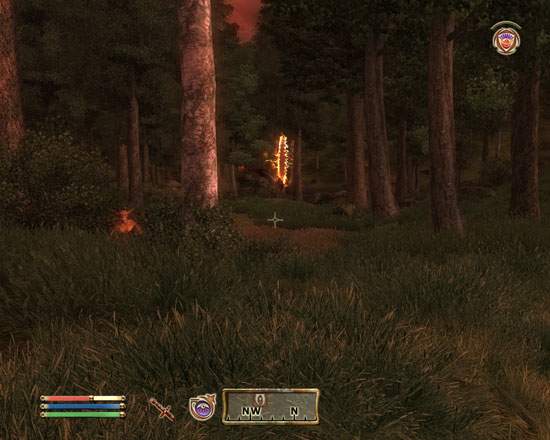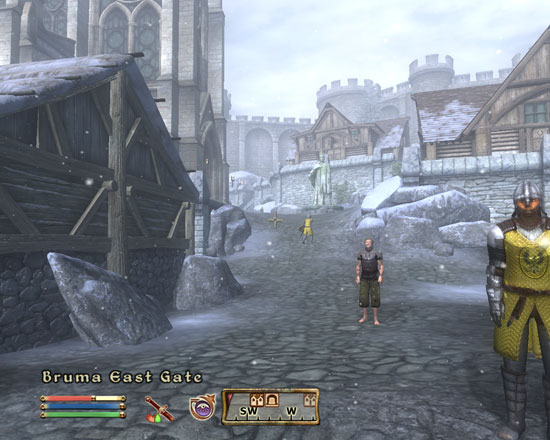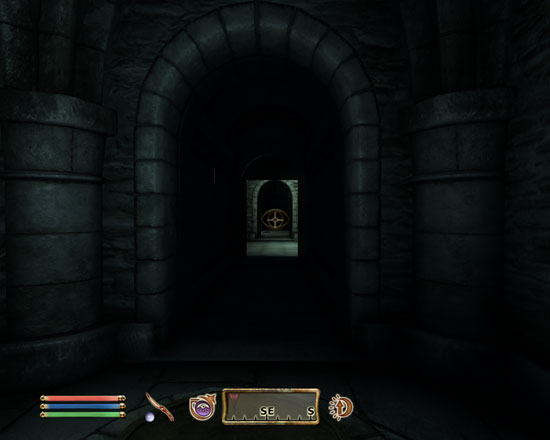The Elder Scrolls IV: Oblivion GPU Performance
by Anand Lal Shimpi on April 26, 2006 1:07 PM EST- Posted in
- GPUs
When both Doom 3 and Half Life 2 came out we burned the midnight oil trying to put together guides for CPU and GPU performance in the games as soon as they were released. Much to our surprise, especially given the performance hype that had preceeded both of them, both games ran relatively well on most mainstream hardware that was available at the time. One GPU generation later and the worries about performance under Doom 3 and Half Life 2 were yesterday's news. The same, unfortunately, cannot be said about Bethesda Softworks' latest immersive RPG: Oblivion.
The game itself is more addicting and immersive than any of its predecessors and its reviews confirm that. But we're not here to tell you that the game is great, we're here to tell you what you need to run it. The fact of the matter is that Oblivion is the most stressful game we've ever encountered, taking the crown away from F.E.A.R. as something that simply doesn't run well on anything. Obtaining good performance under Oblivion is so hard that a number of optimization guides have popped up helping users do whatever it takes to make the game playable. At AnandTech we've been using the Oblivion Tweak Guide from Tweakguides.com and recommend reading it if you're looking to get a good idea for the impact of the many visual settings available in the game.
Just as we've done in our previous articles on Doom 3 and Half Life 2, we're splitting our Oblivion performance coverage into multiple parts. This first part will focus on high-end and mid-range PCIe GPU performance and future articles will look at CPU performance as well as low-end GPU and AGP platform performance if there is enough demand for the latter two. Where we take this series of articles in the future will depend on many of your demands and requests, so please make them heard.
Benchmarking Oblivion
There are really three types of areas you encounter while playing Oblivion, you'll find your character either: 1) Outdoors, 2) Inside a town but still outdoors, or 3) Inside a building or dungeon. Interestingly enough, our seemingly haphazard list of Oblivion locales is actually organized in ascending order of performance. You'll encounter your absolute highest performance inside buildings while you'll actually contemplate spending $1200 on graphics cards whenever you find yourself outside. It only made sense that we benchmarked in each of those three areas, so we constructed manually scripted (read: walk-throughs by hand) benchmarks taking us through one of each type of area in Oblivion.

Oblivion Gate Benchmark
The first test is our Oblivion Gate benchmark, which just so happens to be the most stressful out of all three. In this test we've spotted an Oblivion gate in The Great Forest and walk towards it as scamps attempt to attack our character. The benchmark takes place in a heavily wooded area with lots of grass; combined with the oblivion gate itself, even the fastest GPUs will have trouble breaking 30 fps here.

Town Benchmark
The next test takes place in the town of Bruma and simply features our character walking through a portion of the town. There are a few other characters on screen but no major interaction takes place. Despite the simplicity of the test, since it takes place outside the frame rate is already quite stressful on some mid-range GPUs.

Dungeon Benchmark
Our final test takes place in the Sanctum on our way to the Imperial City prisons; this "Dungeon" benchmark showcases indoor area performance and consists of our character sneaking through the dimly lit Sanctum. There are guards around however none appear in the view of our character. Many cards will do well in this test, but unless they can pass the first benchmark their performance here is meaningless.
We measured frame rates using FRAPS and reported both the minimum and average frame rates in our charts (we left out maximum frame rates because they simply aren't as important and they made the graphs a little too difficult to read when we included them). The minimum frame rates are indicated by a vertical white line inside the bar representing average frame rate.
Since we measured performance using FRAPS and not through a scripted timedemo sequence, the amount of variance between runs is higher than normal; differences in performance of 5% or less aren't significant and shouldn't be treated as such.










100 Comments
View All Comments
MrCoyote - Wednesday, April 26, 2006 - link
What good does it do to benchmark this game? The engine they licensed for this game is very limited in performance and unoptimized <b>(GameByro)</b>. Please wait until a patch comes out, then benchmark the game. This performance limit can be seen in various reviews across the web. A 7900GT or X1900XT should be getting more than 20-30FPS on this game.munky - Wednesday, April 26, 2006 - link
People are not gonna wait for a patch to buy the game, and the whole premise of improved performance with a patch is uncertain. This review is useful for those who have the game, and would like to know if a certain upgrade would give them a significant improvement, or would just like to see how their performance compares to those with other video cards.Jackyl - Wednesday, April 26, 2006 - link
That's very true that the game is very much in an "unfinished" stage and was released too soon. Any professional developer knows that the Gamebyro engine has it's share of performance problems. It is not in the same league of engines as others. Why they licensed this engine is beyond me.Warning...Don't post anything even remotely negative about the game on the official forums. Fanboys will be waiting to lash back at you. Yet people are complaining left and right on the forums of the performance problems, bugs, and interface problems. The PC game looks nothing but just a console port. Bad inventory screen system and GUI. Hopefully a 3rd party modder can change these things.
poohbear - Wednesday, April 26, 2006 - link
the bad inventory has already been resolved w/ a user mod. look for the Btmod-2.20nts - Wednesday, April 26, 2006 - link
The X1800XT can be had for less than the 7900GT and performs better...Why was it not include it in the Mid Range graphs?
SiliconDoc - Friday, July 17, 2009 - link
Wow, how quickly the complaining masses forget. $1,200.00 for two ati cards - LOLAnd here I've been told by all the disgruntled red fans that nvidia is the greedy scalping horror....
BWHAHAHAHAHAAAAAAAAAAAAAAAAAAAAAAAAAAAAAAAAA
---
It's so nice that anandtech doesn't delete their old reviews.
TWELVE HUNDRED BUCKAROOS FOR 2 ATI CARDS.
--
Once again I find out the red fans have been deceiving me all along.
This is great - another myth of the web, exploded thanks to the web.
Spoelie - Wednesday, April 26, 2006 - link
So very truehttp://www.alternate.de/html/productDetails.html?a...">http://www.alternate.de/html/productDetails.html?a...
http://www.alternate.de/html/productDetails.html?a...">http://www.alternate.de/html/productDetails.html?a...
For the money, the x1800xt 512mb seems a better deal.
bob661 - Thursday, April 27, 2006 - link
Just checked on Newegg and the prices are the same unless you go with the 256MB version of the X1800XT.bob661 - Thursday, April 27, 2006 - link
On Zipzoomfly, the 7900GT is a bit cheaper.Anand Lal Shimpi - Wednesday, April 26, 2006 - link
We inadvertently left it out of the midrange tests; I just updated the graphs and conclusion to reflect its inclusion.Take care,
Anand